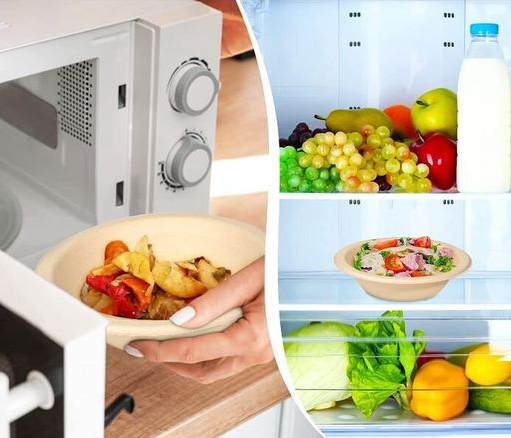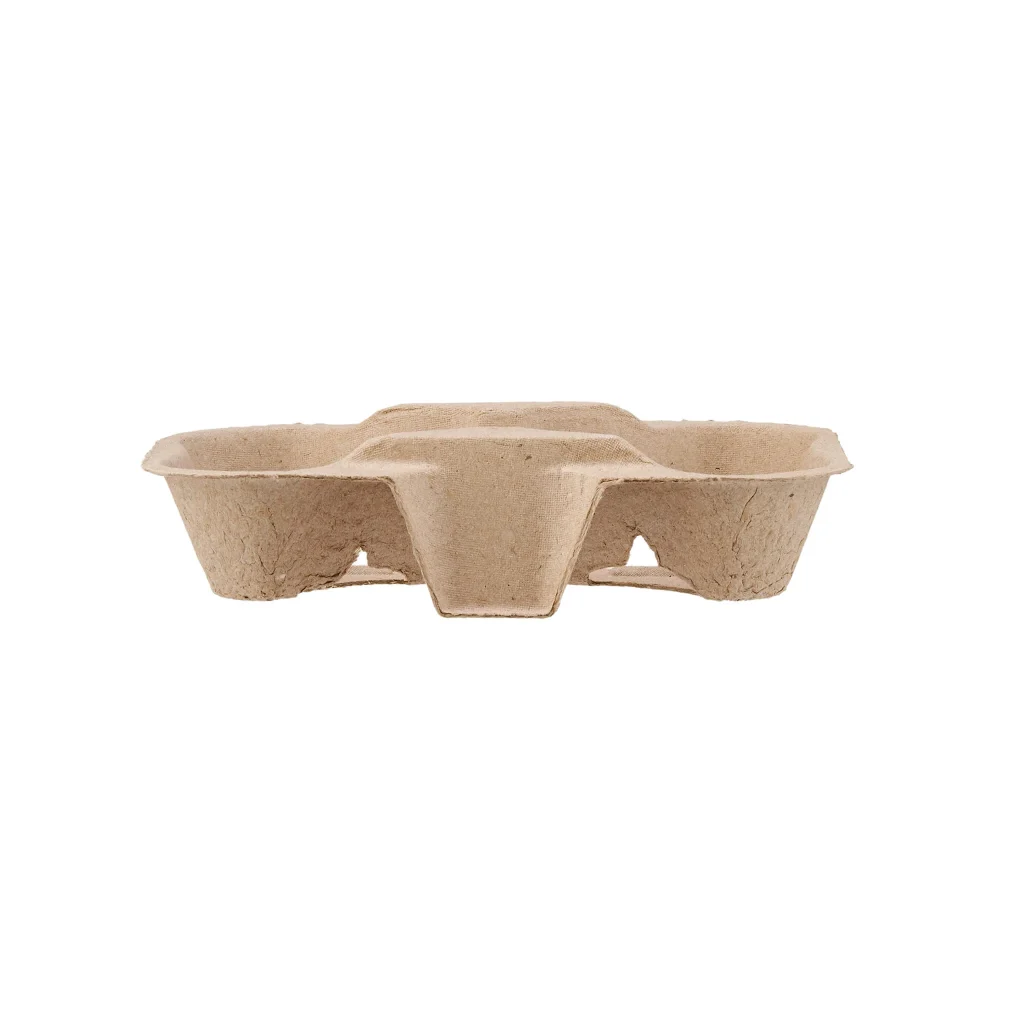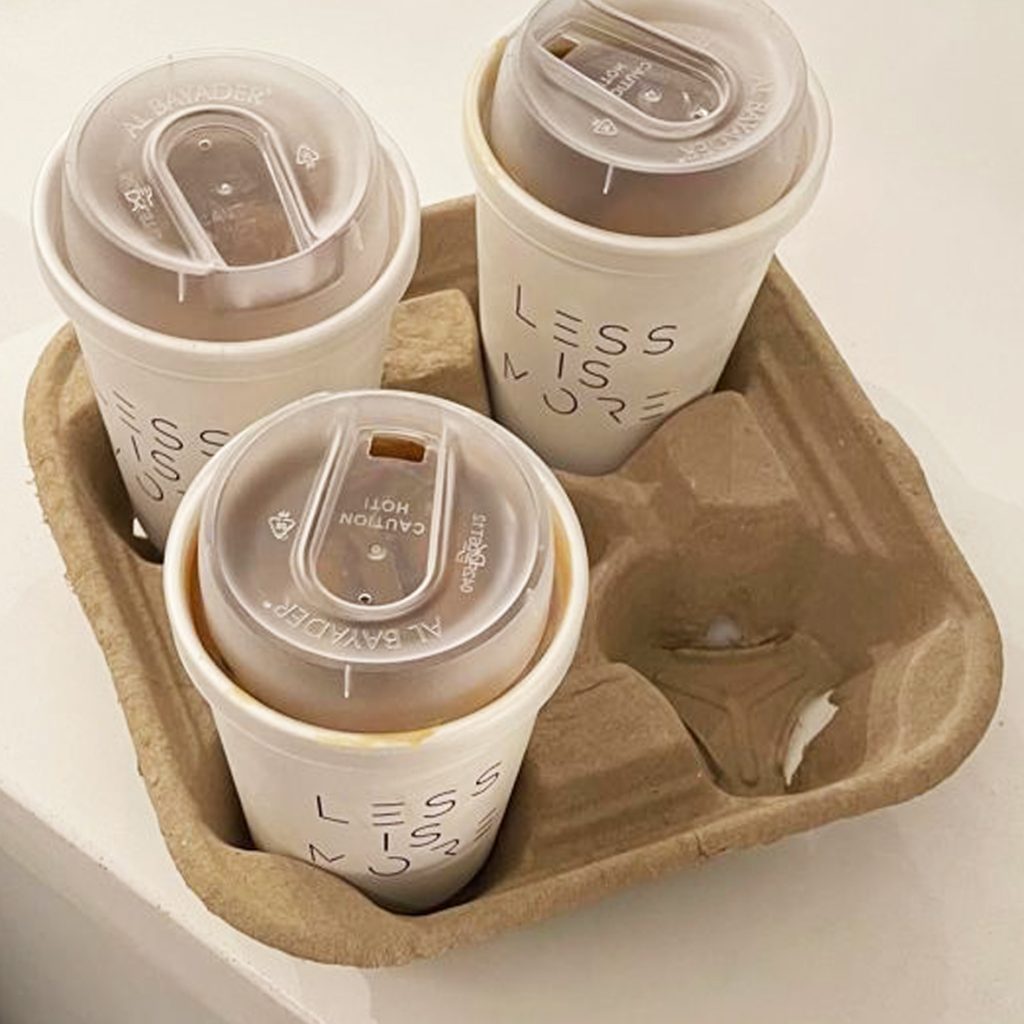Disposable paper plates have become a go-to choice for modern households, parties, and outdoor gatherings due to their convenience and eco-friendly nature. However, when it comes to heating food, many people are unsure whether these plates are safe to use in microwaves or ovens. The improper use of disposable paper plates can lead to serious risks, including fires, toxic fumes, and food contamination. This article will provide a comprehensive guide on the safety of using
disposable paper plates in microwaves and ovens, along with practical alternatives for safer heating options.

Can disposable paper plates be put in the microwave?
Are Disposable Paper Plates Safe for Microwaves?
General Guidelines for Microwave Use
Many disposable paper plates are safe for microwave use, but this largely depends on their material and any coatings applied. Plain, uncoated paper plates are generally microwave-safe as they do not contain harmful chemicals that could leach into food. However, it’s important to check the packaging for labels such as “microwave-safe” or a microwave icon to ensure safety.
Types of Paper Plates and Their Microwave Safety
1. Standard Paper Plates
-
Material: Made from basic paper pulp, often coated with a thin layer of wax or plastic to prevent moisture absorption.
-
Microwave Safety: Suitable for short-term microwave use (up to 2 minutes). However, prolonged heating may cause the plate to warp or soften.
-
Environmental Impact: Non-biodegradable if coated with plastic; more eco-friendly if wax-coated.
2. Coated Paper Plates
-
Material: Coated with polyethylene or wax to provide moisture and grease resistance.
-
Microwave Safety: Not recommended due to potential melting of the coating, which can release harmful chemicals into food.
-
Environmental Impact: Difficult to recycle or compost due to the plastic coating.
3. Sugarcane (Bagasse) Plates
-
Material: Made from sugarcane fibers, a byproduct of sugarcane processing.
-
Microwave Safety: Highly microwave-safe, withstanding higher temperatures and lasting up to 3 minutes in the microwave.
-
Environmental Impact: Fully biodegradable and compostable, making them an excellent eco-friendly choice.
4. Bamboo Paper Plates
-
Material: Made from bamboo pulp or fibers.
-
Microwave Safety: Safe for microwave use, durable, and toxin-free.
-
Environmental Impact: 100% biodegradable and compostable.
5. Printed Paper Plates
-
Material: Standard paper plates with printed designs, often coated for durability.
-
Microwave Safety: Conditional; only safe if the inks are certified as microwave-safe. Otherwise, inks may leach into food.
-
Environmental Impact: Coatings and inks may affect recyclability.
6. Heavy-Duty Paper Plates
-
Material: Thicker paperboard, often reinforced for added strength.
-
Microwave Safety: Suitable for heavier meals and can withstand microwave use for up to 3 minutes.
-
Environmental Impact: May be less recyclable due to added coatings.

Disposable bowls, environmentally friendly tableware, paper plates, food grade
Microwave Safety Table
| Type of Paper Plate |
Material Characteristics |
Microwave Safety |
Recommended Duration |
Precautions |
| Standard Paper Plates |
Thin paper pulp, may be wax-coated |
Safe, but check for moisture absorption |
Up to 2 minutes |
Avoid prolonged use |
| Coated Paper Plates |
Paper with plastic/wax coating |
Not recommended |
– |
Risk of chemical leaching |
| Sugarcane (Bagasse) Plates |
Sugarcane fibers |
Safe |
Up to 3 minutes |
Best eco-friendly option |
| Bamboo Paper Plates |
Bamboo fibers |
Safe |
Up to 3 minutes |
Ensure no synthetic additives |
| Printed Paper Plates |
Ink-coated paper |
Conditional |
Varies |
Use only if inks are microwave-safe |
| Heavy-Duty Paper Plates |
Multi-layered paper |
Safe |
Up to 3 minutes |
Suitable for heavier meals |
Signs That a Paper Plate Is Unsafe for Microwaving
-
The plate warps, softens, or becomes discolored during heating.
-
Smoke or burning smells are detected.
-
Food stains or moisture seep through the plate.
If any of these signs occur, stop microwaving immediately.
Can You Use Disposable Paper Plates in the Oven?
Why Most Paper Plates Are Not Oven-Safe
Paper plates are not designed to withstand the intense, prolonged heat of an oven. Most will ignite at temperatures above 451°F (232°C), posing a significant fire hazard. Even at lower temperatures, they can warp, discolor, or contaminate food.
Oven Safety of Different Paper Plates
| Type of Paper Plate |
Material Characteristics |
Oven Safety |
Recommended Duration |
Precautions |
| Standard Paper Plates |
Thin paper pulp |
Not safe |
– |
High risk of fire |
| Coated Paper Plates |
Paper with plastic/wax coating |
Not safe |
– |
Risk of melting and fume emission |
| Sugarcane (Bagasse) Plates |
Sugarcane fibers |
Safe |
Up to 20 minutes |
Only recommended option |
| Bamboo Paper Plates |
Bamboo fibers |
Not safe |
– |
Risk of burning |
| Printed Paper Plates |
Ink-coated paper |
Not safe |
– |
Risk of ink toxicity |
| Heavy-Duty Paper Plates |
Multi-layered paper |
Not safe |
– |
Not designed for oven use |
Among disposable paper plates, only sugarcane (bagasse) plates are suitable for oven use due to their high heat tolerance.
Risks of Using Paper Plates in the Oven
-
Fire Hazard: Paper is highly flammable and can easily catch fire in the oven.
-
Structural Weakness: Plates may lose their shape and collapse under the weight of food.
-
Chemical Leaching: Coated plates can release harmful chemicals when heated.
Oven-Safe Alternatives
For heating food in the oven, consider the following alternatives:
-
Aluminum Trays: Durable and heat-resistant.
-
Glass or Ceramic Dishes: Reusable and suitable for high temperatures.
-
Specialty Disposable Oven-Safe Trays: Labeled as oven-friendly and can be discarded after use.
How to Determine If a Paper Plate Is Heat-Safe
Manufacturer Labels and Certifications
Always check the product packaging for heat safety guidelines. Reputable manufacturers will provide clear instructions and warnings regarding microwave or oven use.
Home Heat Testing
If unsure, perform a quick test:
-
Place the empty plate in the microwave with a cup of water.
-
Heat for 30 seconds.
-
If the plate becomes hot while the water remains cool, it is not safe for microwaving.
Caution: Avoid testing in the oven to prevent fire risks.
Practical Tips for Heating Food Safely
-
Use Plain Paper Plates for Microwaves: Avoid plates with coatings or decorative designs.
-
Avoid Prolonged Heating: Limit microwave use to 1-2 minutes to prevent overheating.
-
Keep Paper Plates Out of the Oven: Stick to heat-safe materials for baking or broiling.
-
Check Packaging: Always follow manufacturer recommendations for safe use.

Biodegradable and microwaveable disposable paper bowl
Conclusion
Disposable paper plates offer unparalleled convenience for serving meals, but their suitability for heating food depends on the specific type and material. While many paper plates are microwave-safe, they should never be used in an oven due to the risk of fire and chemical release. For safe and efficient heating, rely on microwave-safe or oven-safe alternatives. Always check product labels and follow practical tips to avoid accidents. By understanding the different types of disposable paper plates and their properties, you can make informed decisions that ensure safety and convenience in your kitchen practices.
Key Takeaways
-
Microwave Safety: Check the material and any coatings for microwave safety; avoid any coated or heavily inked plates.
-
Oven Safety: Only sugarcane (bagasse) plates are recommended for oven use due to their high-temperature tolerance.
-
Environmental Considerations: Opt for bamboo or sugarcane plates as sustainable, microwave-safe options.
FAQs About Heating Disposable Paper Plates
Can All Disposable Paper Plates Be Microwaved?
No, only those labeled as microwave-safe. Plates with coatings, metallic elements, or decorative designs are unsuitable for microwaving.
What Happens If You Put a Paper Plate in the Oven?
Most likely, it will burn, catch fire, or lose its shape, potentially ruining your food and creating a hazardous situation.
Are Coated Paper Plates Safe for Heat?
Coated plates may melt or release chemicals when exposed to high heat. Always check the manufacturer’s recommendations before use.








